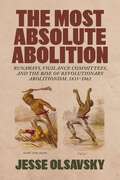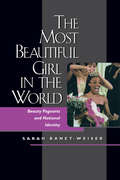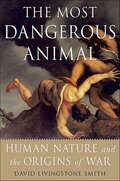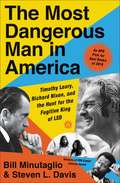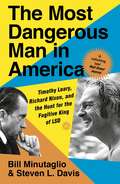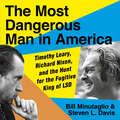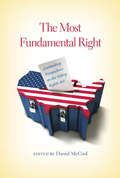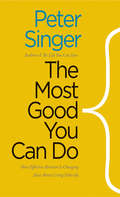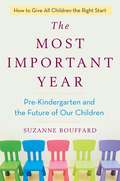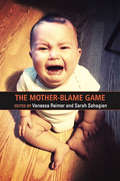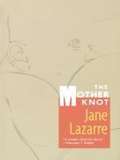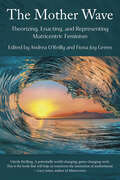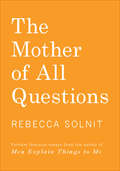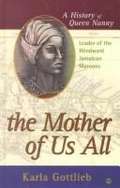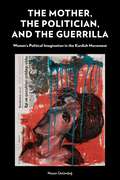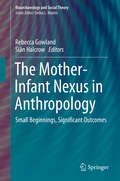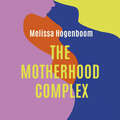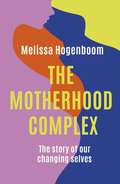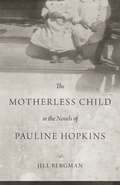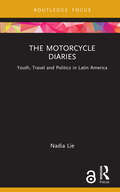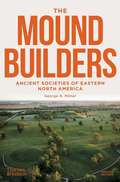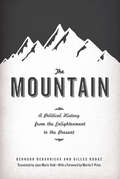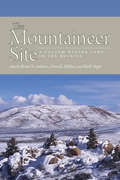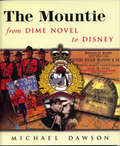- Table View
- List View
The Most Absolute Abolition: Runaways, Vigilance Committees, and the Rise of Revolutionary Abolitionism, 1835–1861
by Jesse OlsavskyJesse Olsavsky’s The Most Absolute Abolition tells the dramatic story of how vigilance committees organized the Underground Railroad and revolutionized the abolitionist movement. These groups, based primarily in northeastern cities, defended Black neighborhoods from police and slave catchers. As the urban wing of the Underground Railroad, they helped as many as ten thousand refugees, building an elaborate network of like-minded sympathizers across boundaries of nation, gender, race, and class.Olsavsky reveals how the committees cultivated a movement of ideas animated by a motley assortment of agitators and intellectuals, including famous figures such as Frederick Douglass, Harriet Tubman, and Henry David Thoreau, who shared critical information with one another. Formerly enslaved runaways—who grasped the economy of slavery, developed their own political imaginations, and communicated strategies of resistance to abolitionists—serve as the book’s central focus. The dialogues between fugitives and abolitionists further radicalized the latter’s tactics and inspired novel forms of feminism, prison reform, and utopian constructs. These notions transformed abolitionism into a revolutionary movement, one at the heart of the crises that culminated in the Civil War.
The Most Beautiful Girl in the World: Beauty Pageants and National Identity
by Sarah Banet-WeiserSarah Banet-Weiser complicates the standard feminist take on beauty pageants in this intriguing look at a hotly contested but enduringly popular American ritual. She focuses on the Miss America pageant in particular, considering its claim to be an accurate representation of the diversity of contemporary American women. Exploring the cultural constructions and legitimations that go on during the long process of the pageant, Banet-Weiser depicts the beauty pageant stage as a place where concerns about national identity, cultural hopes and desires, and anxieties about race and gender are crystallized and condensed. The beauty pageant, she convincingly demonstrates, is a profoundly political arena deserving of serious study.Drawing on cultural criticism, ethnographic research, and interviews with pageant participants and officials, The Most Beautiful Girl in the World illustrates how contestants invent and reinvent themselves while articulating the female body as a national body. Banet-Weiser finds that most pageants are characterized by the ambivalence of contemporary "liberal" feminism, which encourages individual achievement, self-determination, and civic responsibility, while simultaneously promoting very conventional notions of beauty. The book explores the many different aspects of the Miss America pageant, including the swimsuit, the interview, and the talent competitions. It also takes a closer look at some extraordinary Miss Americas, such as Bess Myerson, the first Jewish Miss America; Vanessa Williams, the first African American Miss America; and Heather Whitestone, the first Miss America with a disability.
The Most Dangerous Animal: Human Nature and the Origins of War
by David Livingstone Smith“Original and compelling insights into the human capacity for war . . . A must read for anyone interested in the psychological depths of human nature.” —Barbara S. Held, author of Back to RealityAlmost 200 million human beings, mostly civilians, have died in wars over the last century, and there is no end of slaughter in sight.The Most Dangerous Animal asks what it is about human nature that makes it possible for human beings to regularly slaughter their own kind. It tells the story of why all human beings have the potential to be hideously cruel and destructive to one another. Why are we our own worst enemy? The book shows us that war has been with us—in one form or another—since prehistoric times, and looking at the behavior of our close relatives, the chimpanzees, it argues that a penchant for group violence has been bred into us over millions of years of biological evolution. The Most Dangerous Animal takes the reader on a journey through evolution, history, anthropology, and psychology, showing how and why the human mind has a dual nature: on the one hand, we are ferocious, dangerous animals who regularly commit terrible atrocities against our own kind, on the other, we have a deep aversion to killing, a horror of taking human life.Meticulously researched and far-reaching in scope and with examples taken from ancient and modern history, The Most Dangerous Animal delivers a sobering lesson for an increasingly dangerous world.“Illuminates an exceedingly dark subject: humankind’s deep-seated penchant for war. The result is a discerning, insightful, highly original, and very disturbing book.” —Andrew J. Bacevich, author of The Age of Illusions
The Most Dangerous Man in America: Timothy Leary, Richard Nixon and the Hunt for the Fugitive King of LSD
by Bill Minutaglio Steven L. DavisFrom Bill Minutaglio and Steven L. Davis, authors of the PEN Center USA award-winning Dallas 1963, comes a madcap narrative about Timothy Leary's daring prison escape and run from the law.On the moonlit evening of September 12, 1970, an ex-Harvard professor with a genius I.Q. studies a twelve-foot high fence topped with barbed wire. A few months earlier, Dr. Timothy Leary, the High Priest of LSD, had been running a gleeful campaign for California governor against Ronald Reagan. Now, Leary is six months into a ten-year prison sentence for the crime of possessing two marijuana cigarettes.Aided by the radical Weather Underground, Leary's escape from prison is the counterculture's union of "dope and dynamite," aimed at sparking a revolution and overthrowing the government. Inside the Oval Office, President Richard Nixon drinks his way through sleepless nights as he expands the war in Vietnam and plots to unleash the United States government against his ever-expanding list of domestic enemies. Antiwar demonstrators are massing by the tens of thousands; homemade bombs are exploding everywhere; Black Panther leaders are threatening to burn down the White House; and all the while Nixon obsesses over tracking down Timothy Leary, whom he has branded "the most dangerous man in America."Based on freshly uncovered primary sources and new firsthand interviews, THE MOST DANGEROUS MAN IN AMERICA is an American thriller that takes readers along for the gonzo ride of a lifetime. Spanning twenty-eight months, President Nixon's careening, global manhunt for Dr. Timothy Leary winds its way among homegrown radicals, European aristocrats, a Black Panther outpost in Algeria, an international arms dealer, hash-smuggling hippies from the Brotherhood of Eternal Love, and secret agents on four continents, culminating in one of the trippiest journeys through the American counterculture.
The Most Dangerous Man in America: Timothy Leary, Richard Nixon and the Hunt for the Fugitive King of LSD
by Bill Minutaglio Steven L. Davis'It's a rollicking tale that brings to life the antic atmosphere of America in the 'Me' Decade' Wall Street Journal'A madcap chase... this is a well-written chronicle of 28 months when the world went slightly mad' Sunday Times'A suitably head-spinning account of LSD High Priest Dr Timothy Leary' Mail on SundayOn the moonlit evening of September 12, 1970, an ex-Harvard professor with a genius IQ studies a twelve-foot high fence topped with barbed wire. A few months earlier, Dr. Timothy Leary, the High Priest of LSD, had been running a gleeful campaign for California governor against Ronald Reagan. Now, Leary is six months into a ten-year prison sentence for the crime of possessing two marijuana cigarettes.Aided by the radical Weather Underground, Leary's escape from prison is the counterculture's union of "dope and dynamite," aimed at sparking a revolution and overthrowing the government. Inside the Oval Office, President Richard Nixon drinks his way through sleepless nights as he expands the war in Vietnam and plots to unleash the United States government against his ever-expanding list of domestic enemies. Antiwar demonstrators are massing by the tens of thousands; homemade bombs are exploding everywhere; Black Panther leaders are threatening to burn down the White House; and all the while Nixon obsesses over tracking down Timothy Leary, whom he has branded "the most dangerous man in America."Based on freshly uncovered primary sources and new firsthand interviews, THE MOST DANGEROUS MAN IN AMERICA is an American thriller that takes readers along for the gonzo ride of a lifetime. Spanning twenty-eight months, President Nixon's careening, global manhunt for Dr. Timothy Leary winds its way among homegrown radicals, European aristocrats, a Black Panther outpost in Algeria, an international arms dealer, hash-smuggling hippies from the Brotherhood of Eternal Love, and secret agents on four continents, culminating in one of the trippiest journeys through the American counterculture.
The Most Dangerous Man in America: Timothy Leary, Richard Nixon and the Hunt for the Fugitive King of LSD
by Bill Minutaglio Steven L. Davis'It's a rollicking tale that brings to life the antic atmosphere of America in the 'Me' Decade' Wall Street Journal'A madcap chase... this is a well-written chronicle of 28 months when the world went slightly mad' Sunday TimesFrom Bill Minutaglio and Steven L. Davis, authors of the PEN Center USA award-winning Dallas 1963, comes a madcap narrative about Timothy Leary's daring prison escape and run from the law.On the moonlit evening of September 12, 1970, an ex-Harvard professor with a genius IQ studies a twelve-foot high fence topped with barbed wire. A few months earlier, Dr. Timothy Leary, the High Priest of LSD, had been running a gleeful campaign for California governor against Ronald Reagan. Now, Leary is six months into a ten-year prison sentence for the crime of possessing two marijuana cigarettes.Aided by the radical Weather Underground, Leary's escape from prison is the counterculture's union of "dope and dynamite," aimed at sparking a revolution and overthrowing the government. Inside the Oval Office, President Richard Nixon drinks his way through sleepless nights as he expands the war in Vietnam and plots to unleash the United States government against his ever-expanding list of domestic enemies. Antiwar demonstrators are massing by the tens of thousands; homemade bombs are exploding everywhere; Black Panther leaders are threatening to burn down the White House; and all the while Nixon obsesses over tracking down Timothy Leary, whom he has branded "the most dangerous man in America."Based on freshly uncovered primary sources and new firsthand interviews, THE MOST DANGEROUS MAN IN AMERICA is an American thriller that takes readers along for the gonzo ride of a lifetime. Spanning twenty-eight months, President Nixon's careening, global manhunt for Dr. Timothy Leary winds its way among homegrown radicals, European aristocrats, a Black Panther outpost in Algeria, an international arms dealer, hash-smuggling hippies from the Brotherhood of Eternal Love, and secret agents on four continents, culminating in one of the trippiest journeys through the American counterculture.(P)2018 Hachette Audio
The Most Fundamental Right
by Daniel MccoolPassed in 1965 during the height of the Civil Rights movement, the Voting Rights Act (VRA) changed the face of the American electorate, dramatically increasing minority voting, especially in the South. While portions of the Act are permanent, certain provisions were set to expire in 2007. Reauthorization of these provisions passed by a wide margin in the House, and unanimously in the Senate, but the lopsided tally hid a deep and growing conflict. The Most Fundamental Right is an effort to understand the debate over the Act and its role in contemporary American democracy. Is the VRA the cornerstone of civil rights law that prevents unfair voting practices, or is it an anachronism that no longer serves American democracy? Divided into three sections, the book utilizes a point/counterpoint approach. Section 1 explains the legal and political context of the Act, providing important background for what follows; Section 2 pairs three debates concerning specific provisions or applications of the Act; while Section 3 offers commentaries on the previous chapters from attorneys with widely divergent viewpoints.
The Most Good You Can Do: How Effective Altruism Is Changing Ideas About Living Ethically (Castle Lectures Ser.)
by Peter SingerAn argument for putting sentiment aside and maximizing the practical impact of our donated dollars: &“Powerful, provocative&” (Nicholas Kristof, The New York Times). Peter Singer&’s books and ideas have been disturbing our complacency ever since the appearance of Animal Liberation. Now he directs our attention to a challenging new movement in which his own ideas have played a crucial role: effective altruism. Effective altruism is built upon the simple but profoundly unsettling idea that living a fully ethical life involves doing the &“most good you can do.&” Such a life requires a rigorously unsentimental view of charitable giving: to be a worthy recipient of our support, an organization must be able to demonstrate that it will do more good with our money or our time than other options open to us. Singer introduces us to an array of remarkable people who are restructuring their lives in accordance with these ideas, and shows how, paradoxically, living altruistically often leads to greater personal fulfillment than living for oneself. Doing the Most Good develops the challenges Singer has made, in the New York Times and Washington Post, to those who donate to the arts, and to charities focused on helping our fellow citizens, rather than those for whom we can do the most good. Effective altruists are extending our knowledge of the possibilities of living less selfishly, and of allowing reason, rather than emotion, to determine how we live. Doing the Most Good offers new hope for our ability to tackle the world&’s most pressing problems.
The Most Important Year: Pre-Kindergarten and the Future of Our Children
by Suzanne BouffardAn eye-opening look inside pre-K in America and what it will take to give all children the best start in school possible. At the heart of this groundbreaking book are two urgent questions: What do our young children need in the earliest years of school, and how do we ensure that they all get it? Cutting-edge research has proven that early childhood education is crucial for all children to gain the academic and emotional skills they need to succeed later in life. Children who attend quality pre-K programs have a host of positive outcomes including better language, literacy, problem-solving and math skills down the line, and they have a leg up on what appears to be the most essential skill to develop at age four: strong self-control. But even with this overwhelming evidence, early childhood education is at a crossroads in America. We know that children can and do benefit, but we also know that too many of our littlest learners don’t get that chance—millions of parents can’t find spots for their children, or their preschoolers end up in poor quality programs. With engrossing storytelling, journalist Suzanne Bouffard takes us inside some of the country’s best pre-K classrooms to reveal the sometimes surprising ingredients that make them work—and to understand why some programs are doing the opposite of what is best for children. It also chronicles the stories of families and teachers from many backgrounds as they struggle to give their children a good start in school. This book is a call to arms when we are at a crucial moment, and perhaps on the verge of a missed opportunity: We now have the means and the will to have universal pre-kindergarten, but we are also in grave danger of not getting it right.
The Mother Blame Game
by Vanessa ReimerThe Mother-Blame Game is an interdisciplinary and intersectional examination of the phenomenon of mother-blame in the twenty-first century. As the socioeconomic and cultural expectations of what constitutes “good motherhood” grow continually narrow and exclusionary, mothers are demonized and stigmatized—perhaps now more than ever—for all that is perceived to go “wrong” in their children’s lives. This anthology brings together creative and scholarly contributions from feminist academics and activists alike to provide a dynamic study of the many varied ways in which mothers are blamed and shamed for their maternal practice. Importantly, it also considers how mothers resist these ideologies by engaging in empowered and feminist mothering practices, as well as by publicly challenging patriarchal discourses of “good motherhood.”
The Mother Knot
by Jane LazarreIn this compelling memoir by a writer, mother, and feminist, Jane Lazarre confronts the myth of the "good mother" with her fiercely honest and intimate portrait of early motherhood as a time of profound ambivalence and upheaval, filled with desperation as well as joy, the struggle to reclaim a sense of self, and sheer physical exhaustion. Originally published in 1976, The Mother Knot is a feminist classic, as relevant today as it was twenty years ago.
The Mother Wave: Theorizing, Enacting, and Representing Matricentric Feminism
by Andrea O’Reilly;Fiona Joy GreenMatricentric feminism seeks to make motherhood the business of feminism by positioning mothers' needs and concerns as the starting point for a theory and politic on and for the empowerment of women as mothers. Based on the conviction that mothering is a verb, it understands that becoming and being a mother is not limited to biological mothers or cisgender women but rather to anyone who does the work of mothering as a central part of their life. The Mother Wave, the first-ever book on the topic, compellingly explores how mothers need a matricentric mode of feminism organized from and for their particular identity and work as mothers, and because mothers remain disempowered despite sixty years of feminism. The anthology makes visible the power of matricentric feminism as it is theorized, enacted, and represented to realize and achieve the subversive potential of mothers and their contributions to feminist theory and activism. Contributors share the impact and influence of matricentric feminism on families and children, culture, art/literature, education, public policy, social media, and workplace practices through personal reflections, scholarly essays, memoir, creative non-fiction, poetry, and photography. The mother wave of matricentric feminism invites conversations with others and offers a praxis of feminism that aims to coexist, overlap, and intersect with others.
The Mother of All Questions
by Rebecca SolnitIn a timely and incisive follow-up to her national bestseller Men Explain Things to Me, Rebecca Solnit offers sharp commentary on women who refuse to be silenced, misogynistic violence, the fragile masculinity of the literary canon, the gender binary, the recent history of rape jokes, and much more. In characteristic style, Solnit mixes humor, keen analysis, and sharp insight in these eleven essays.
The Mother of Us All: A History of Queen Nanny, Leader of the Windward Jamaican Maroons
by Karla Lewis GottliebThe author analyzes the importance of Queen Nanny from cultural, military, historical, and religious point of view. This book marks an attempt to integrate a key figure of New World history into her rightful place as the leader of a critical resistance movement in Jamaica in the first part of the 18th century.
The Mother, the Politician, and the Guerrilla: Women’s Political Imagination in the Kurdish Movement
by Nazan ÜstündağThe Mother, the Politician, and the Guerrilla intervenes in discussions on decolonialism and feminism by introducing the example of the Kurdish Women’s Freedom Movement. Üstündağ shows how the practices and the concepts of the movement contribute to debates on how the past, present, and future can be critically rethought in revolutionary ways.In the movement’s images, figures, voices, bodies, and their reverberations Üstündağ elaborates a new political imagination that has emerged in Kurdistan through women’s acts and speech. This political imagination unfolds between flesh, body, voice, language. It is the result of Kurdish women’s desire to find new ways of being and becoming, between the necessary and the possible.Focusing on the figures of the mother, the woman politician and woman guerilla, Üstündağ argues that the Kurdish Women’s Freedom Movement changes what politics consists of, including its matter, relationality, temporality, and spatiality. Although anchored in the specific Kurdish experiences, the book puts the movement into conversation with feminist political theory, psychoanalysis, Black Studies, Queer Studies, and Decolonial Studies. In solidarity with the Kurdish Movement’s tradition of resistance to History with a capital H that Kurds have built through reiterated performance, the book seeks to establish what new entanglements with wide-ranging thought the movement offers as a provocation for contemporary politics.
The Mother-Infant Nexus in Anthropology: Small Beginnings, Significant Outcomes (Bioarchaeology and Social Theory)
by Rebecca Gowland Siân HalcrowOver the past 20 years there has been increased research traction in the anthropology of childhood. However, infancy, the pregnant body and motherhood continue to be marginalised. This book will focus on the mother-infant relationship and the variable constructions of this dyad across cultures, including conceptualisations of the pregnant body, the beginnings of life, and implications for health. This is particularly topical because there is a burgeoning awareness within anthropology regarding the centrality of mother-infant interactions for understanding the evolution of our species, infant and maternal health and care strategies, epigenetic change, and biological and social development. This book will bring together cultural and biological anthropologists and archaeologists to examine the infant-maternal interface in past societies. It will showcase innovative theoretical and methodological approaches towards understanding societal constructions of foetal, infant and maternal bodies. It will emphasise their interconnectivity and will explore the broader significance of the mother/infant nexus for overall population well-being.
The Motherhood Complex: The Story of Our Changing Selves (Karen Pirie #44)
by Melissa Hogenboom'THE MOTHERHOOD COMPLEX does for mothers in particular what INVISIBLE WOMEN did for women as a whole: exposes the myriad ways in which the system is stacked against us, while celebrating the strengths and successes we achieve in spite of it all' Leah Hazard'A welcome, refreshing and clear-eyed look at the twenty-first century expectations of motherhood' Gina RipponEnriched with discoveries from biology, psychology and social science, THE MOTHERHOOD COMPLEX is a journey to the heart of what it means to become a mother.Melissa Hogenboom examines how the suite of changes we experience during pregnancy and motherhood influence our sense of self, both physically and from the wider world. From the way our brain changes during pregnancy and the psychological impact of our changing body, to the true cost of the motherhood workplace penalty and the intrusion of technology on family life, Hogenboom reveals how external events and society at large shape the way we see ourselves and impacts upon the choices we make.Interweaving her personal experience as a mother of two young children with the latest research, Hogenboom confronts the modern myth of maternal perfection and highlights the importance of understanding how and why we change for our physical and emotional health.
The Motherhood Complex: The story of our changing selves
by Melissa Hogenboom'THE MOTHERHOOD COMPLEX does for mothers in particular what INVISIBLE WOMEN did for women as a whole: exposes the myriad ways in which the system is stacked against us, while celebrating the strengths and successes we achieve in spite of it all' Leah Hazard'A welcome, refreshing and clear-eyed look at the twenty-first century expectations of motherhood' Gina RipponEnriched with discoveries from biology, psychology and social science, THE MOTHERHOOD COMPLEX is a journey to the heart of what it means to become a mother.Melissa Hogenboom examines how the suite of changes we experience during pregnancy and motherhood influence our sense of self, both physically and from the wider world. From the way our brain changes during pregnancy and the psychological impact of our changing body, to the true cost of the motherhood workplace penalty and the intrusion of technology on family life, Hogenboom reveals how external events and society at large shape the way we see ourselves and impacts upon the choices we make.Interweaving her personal experience as a mother of two young children with the latest research, Hogenboom confronts the modern myth of maternal perfection and highlights the importance of understanding how and why we change for our physical and emotional health.
The Motherless Child in the Novels of Pauline Hopkins
by Jill BergmanWell known in her day as a singer, playwright, author, and editor of the Colored American Magazine, Pauline Hopkins (1859--1930) has been the subject of considerable scholarly attention over the last twenty years. Academic review of her many accomplishments, however, largely overlooks Hopkins's contributions as novelist. The Motherless Child in the Novels of Pauline Hopkins, the first book-length study of Hopkins's major fiction, fills this gap, offering a sustained analysis of motherlessness in Contending Forces, Hagar's Daughter, Winona, and Of One Blood. Motherlessness appears in all of Hopkins's novels. The motif, Jill Bergman asserts, resonated profoundly for African Americans living with the legacy of abduction from a motherland and familial fragmentation under slavery. In her novels, motherlessness serves as a trope for the national alienation of post-Reconstruction African Americans. The longing and search for a maternal figure, then, represents an effort to reconnect with the absent mother -- a missing parent and a lost African history and heritage. In Hopkins's oeuvre, the image of the mother of African heritage -- a source of both identity and persecution -- becomes a source of power and possibility. Bergman shows how historical events -- such as Bleeding Kansas, the execution of John Brown, and the Middle Passage -- gave rise to a sense of motherlessness and how Hopkins's work engages with that of other contemporaneous race activists. This illuminating study opens new terrain not only in Hopkins scholarship, but also in the complex interchanges between literary, African American, psychoanalytic, feminist, and postcolonial studies.
The Motorcycle Diaries: Youth, Travel and Politics in Latin America (Cinema and Youth Cultures)
by Nadia LieThe first monograph to examine Walter Salles’ The Motorcycle Diaries, this book explains the significance of Salles’ film with respect to the specific category of ‘youth culture’ as a historically and culturally situated concept. The Motorcycle Diaries looks at the film’s engagement with ‘emerging adulthood’, the importance of travel as a source of self-discovery, and the film’s impact on the iconicity of Che Guevara, the international emblem of a restless, rebellious youth. Combining insights from transnational film studies, tourism studies and affect theory, as well as drawing on extensive historical materials, this book provides not only a necessary addition to existing scholarship on this popular movie, but also an inspiring model for the analysis of film in relation to youth culture - a burgeoning field of interest in Latin American scholarship. It will interest any scholar in film studies, specifically transnational cinemas, global cinema, Latin American cinema, Latin American history, postcolonial studies, cultural studies, tourism studies and global politics.
The Mottled Lizard
by Elspeth HuxleyA story of a young lady returning to her beloved Africa after World War II. She has to deal with what is left after the war, with her houseboy, local help, other European friends. She learns that there are diseases and emergencies that can't be dealt with, this far from Nairobi.
The Moundbuilders: Second Edition
by George R. MilnerBrought up to date with the latest research, The Moundbuilders is the definitive visual guide to North America’s eastern region and the societies that forever changed its landscape. Hailed by Bruce D. Smith, curator of North American archaeology at the Smithsonian Institution, as “without question the best available book on the pre-Columbian . . . societies of eastern North America,” this wide-ranging and richly illustrated volume covers the entire prehistory of the Eastern Woodlands and the thousands of earthen mounds that can be found there, built between 3100 BCE and 1600 CE. The second edition of The Moundbuilders has been brought fully up-to-date, with the latest research on the peopling of the Americas, including more coverage of pre-Clovis groups, new material on Native American communities in the thirteenth to sixteenth centuries CE, and new narratives of migration drawn from ancient and modern DNA. Far-reaching and illustrated throughout, this book is the perfect visual guide to the region for students, tourists, archaeologists, and anyone interested in ancient American history.
The Mountain: A Political History from the Enlightenment to the Present
by Bernard Debarbieux Gilles RudazIn The Mountain, geographers Bernard Debarbieux and Gilles Rudaz trace the origins of the very concept of a mountain, showing how it is not a mere geographic feature but ultimately an idea, one that has evolved over time, influenced by changes in political climates and cultural attitudes. To truly understand mountains, they argue, we must view them not only as material realities but as social constructs, ones that can mean radically different things to different people in different settings. From the Enlightenment to the present day, and using a variety of case studies from all the continents, the authors show us how our ideas of and about mountains have changed with the times and how a wide range of policies, from border delineation to forestry as well as nature protection and social programs, have been shaped according to them. A rich hybrid analysis of geography, history, culture, and politics, the book promises to forever change the way we look at mountains.
The Mountaineer Site: A Folsom Winter Camp in the Rockies
by David J. Meltzer Mark Stiger Brian N. AndrewsThe Mountaineer Site presents over a decade’s worth of archaeological research conducted at Mountaineer, a Paleoindian campsite in Colorado’s Upper Gunnison Basin. Mountaineer is one of the very few extensively excavated, long-term Folsom occupations with evidence of built structures. The site provides a rich record of stone tool manufacture and use, as well as architectural features, and offers insight into Folsom period adaptive strategies from a time when the region was still in the grip of a waning Ice Age. Contributors examine data concerning the structures, the duration and repetition of occupations, and the nature of the site’s artifact assemblages to offer a valuable new perspective on human activity in the Rocky Mountains in the Late Pleistocene. Chapters survey the history of fieldwork at the site and compare and explain the various excavation procedures used; discuss the geology, taphonomic history, and geochronology of the site; analyze artifacts and other recovered materials; examine architectural elements; and compare the present and past environments of the Upper Gunnison Basin to gain insight into the setting in which Folsom groups were operating and the resources that were available to them. The Folsom archaeological record indicates far greater variability in adaptive behavior than previously recognized in traditional models. The Mountaineer Site shows how accounting for reduced mobility, more generalized subsistence patterns, and variability in tool manufacture and use allows for a richer and more accurate understanding of Folsom lifeways. It will be of great interest to graduate students and archaeologists focusing on Paleoindian archaeology, hunter-gatherer mobility, lithic technological organization, and prehistoric households, as well as prehistorians, anthropologists, and social scientists. Contributors: Richard J. Anderson, Andrew R. Boehm, Christy E. Briles, Katherine A. Cross, Steven D. Emslie, Metin I. Eren, Richard Gunst, Kalanka Jayalath, Brooke M. Morgan, Cathy Whitlock
The Mountie from Dime Novel to Disney
by Michael DawsonHistorian Michael Dawson digs deep into the written and pictorial record to reveal how the RCMP, since its inception, has constructed and zealously guarded its public image. Drawing on previously untapped sources, Dawson documents how consultants and entrepreneurs deliberately transformed and modernized the traditional symbolism of the Mountie. His trenchant analysis extends to the ironies of the recent licensing of the hallowed Mountie image to the ultimate dream-merchants-Disney.
